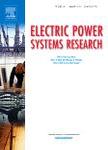版权所有:内蒙古大学图书馆 技术提供:维普资讯• 智图
内蒙古自治区呼和浩特市赛罕区大学西街235号 邮编: 010021

作者机构:Univ Michoacana Morelia Michoacan Mexico
出 版 物:《ELECTRIC POWER SYSTEMS RESEARCH》 (电力系统研究)
年 卷 期:2019年第172卷
页 面:63-76页
核心收录:
学科分类:0808[工学-电气工程] 080802[工学-电力系统及其自动化] 08[工学]
基 金:CONACyT, Mexico [94349, 9920133F] Fondo de Sustentabilidad Energetica SENER-CONACyT, Mexico
主 题:Integrated gas and electricity networks Mixed-integer nonlinear programming Power systems operation Security-constrained unit commitment
摘 要:This paper proposes a generalized short-term unit commitment approach for optimizing the hourly thermal generation scheduling by considering the existing interdependence between natural gas and electricity infrastructures. This generalized approach is formulated as a mixed-integer nonlinear optimization problem where a multi-period optimal gas and alternating current power flow model is incorporated into the thermal unit commitment problem. Contrary to all other proposals that ignore the reactive power dispatch and alternating current electricity network constraints for solving the unit commitment problem that considers the integrated electricity-natural gas system, the proposed solution approach simultaneously co-optimizes the active and reactive power scheduling and dispatch, while taking into account the set of physical and operational constraints associated with each infrastructure. This set of constraints includes reactive power generation limits, nodal voltage magnitude limits and dynamic gas flow constraints. The solution is obtained by decomposing this generalized optimization problem into two mutually connected optimization subproblems: one spatially separable related to the unit commitment problem and the other temporally separable associated with the unified co-optimization of both energy systems, which are sequentially solved until the same hourly generation dispatch in both subproblems is obtained. Hence, this solution is optimal for the unit commitment problem and the optimal gas and power flow problem. Study cases on two multi-energy systems are presented to numerically illustrate the suitability and main characteristics of the proposed approach.